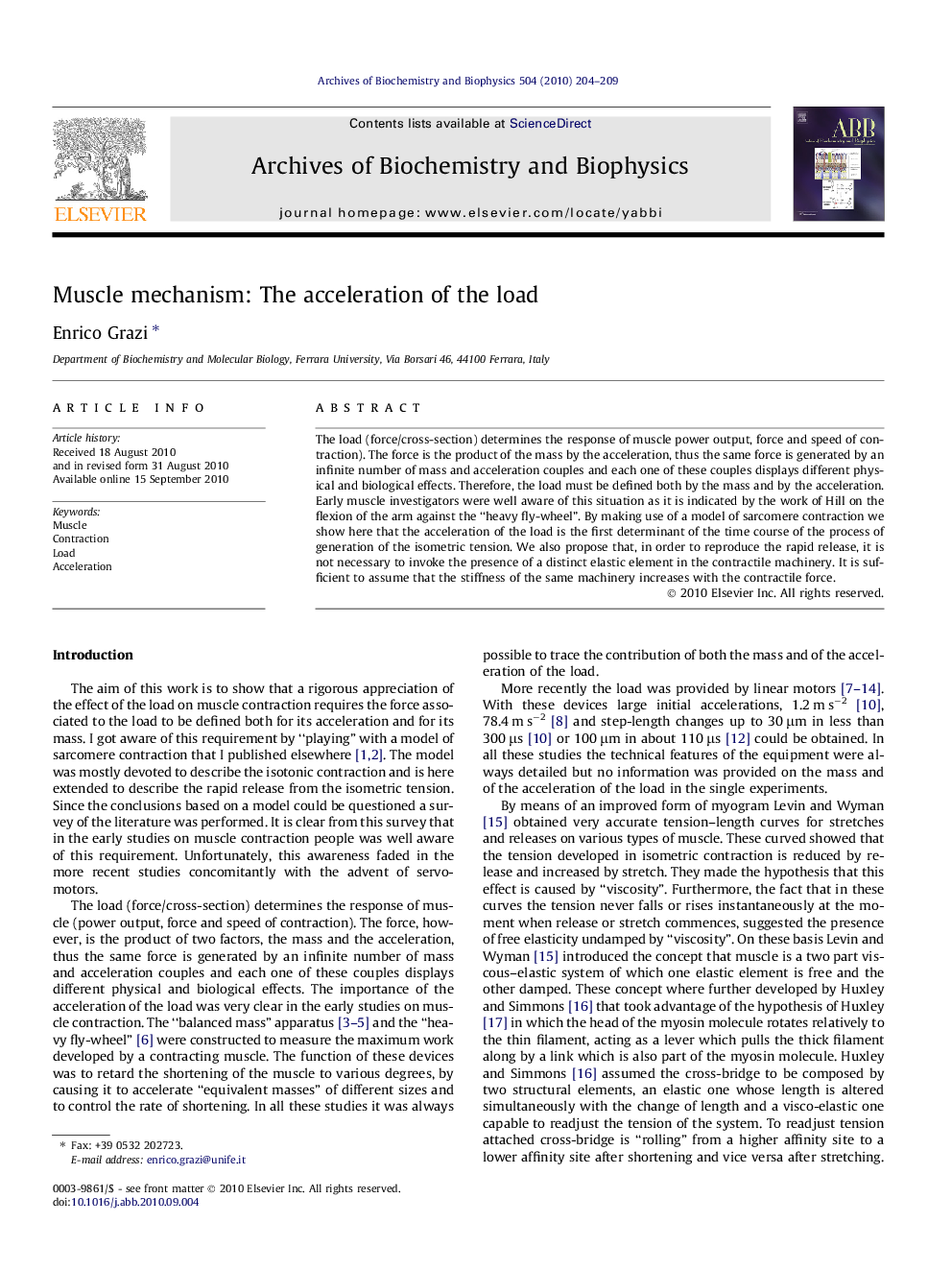| کد مقاله | کد نشریه | سال انتشار | مقاله انگلیسی | نسخه تمام متن |
|---|---|---|---|---|
| 1925969 | 1536423 | 2010 | 6 صفحه PDF | دانلود رایگان |

The load (force/cross-section) determines the response of muscle power output, force and speed of contraction). The force is the product of the mass by the acceleration, thus the same force is generated by an infinite number of mass and acceleration couples and each one of these couples displays different physical and biological effects. Therefore, the load must be defined both by the mass and by the acceleration. Early muscle investigators were well aware of this situation as it is indicated by the work of Hill on the flexion of the arm against the “heavy fly-wheel”. By making use of a model of sarcomere contraction we show here that the acceleration of the load is the first determinant of the time course of the process of generation of the isometric tension. We also propose that, in order to reproduce the rapid release, it is not necessary to invoke the presence of a distinct elastic element in the contractile machinery. It is sufficient to assume that the stiffness of the same machinery increases with the contractile force.
Research highlights
► To define correctly muscle contraction both the mass and the acceleration of the load must be known. In fact the time length of the pre-steady state changes when the acceleration of the load (at constant load force) is changed.
► The generation of the “rapid release” does not necessarily require the presence of a physically distinct elastic element.
► The same effect is obtained if the elastic properties of the contractile apparatus change in the course of the isometric contraction.
Journal: Archives of Biochemistry and Biophysics - Volume 504, Issue 2, 15 December 2010, Pages 204–209